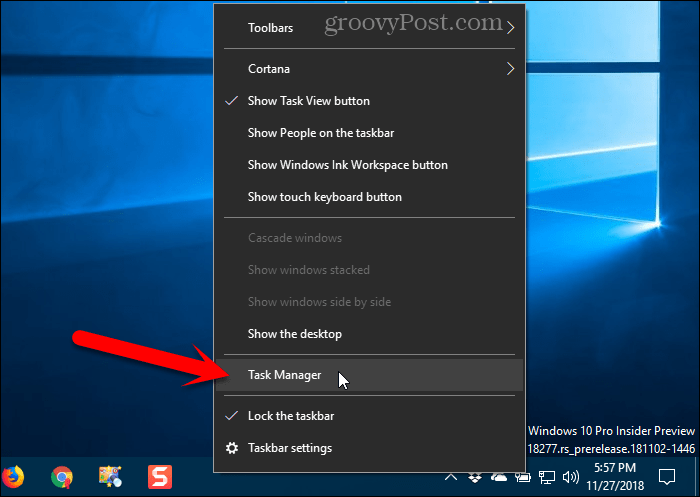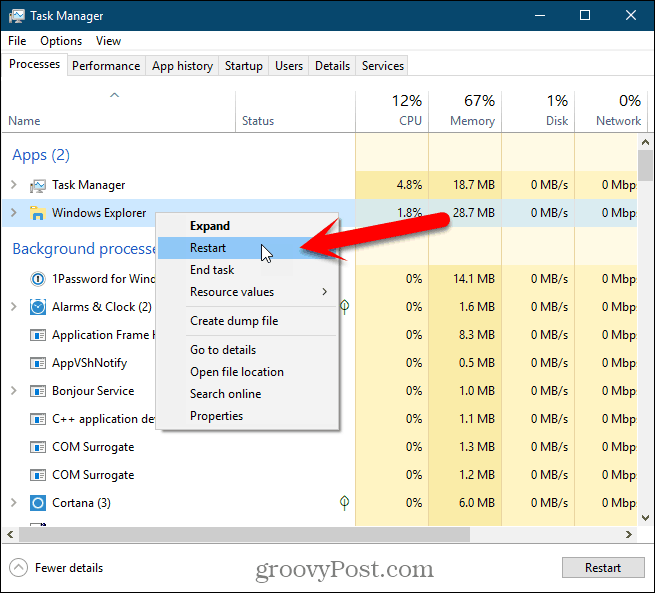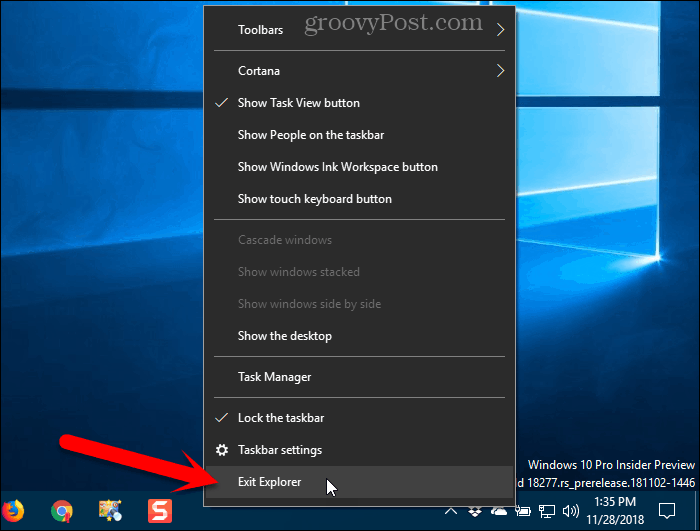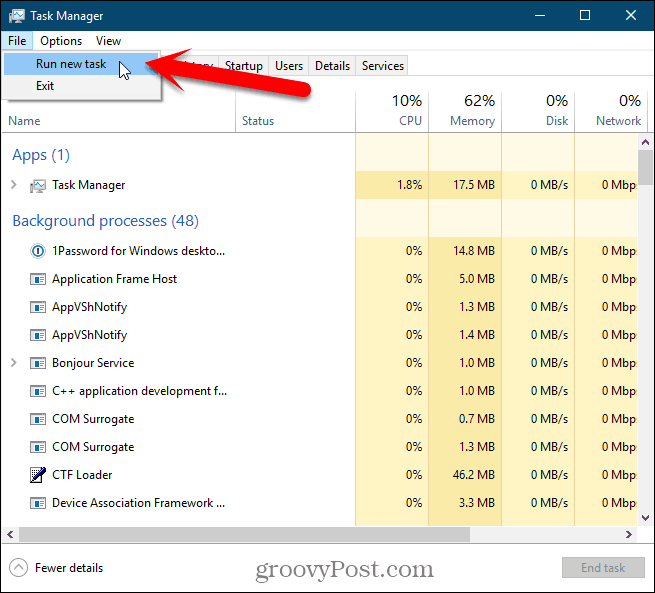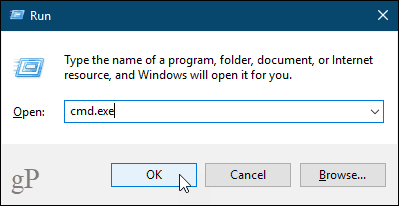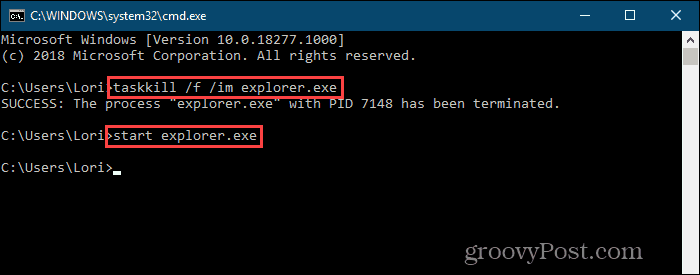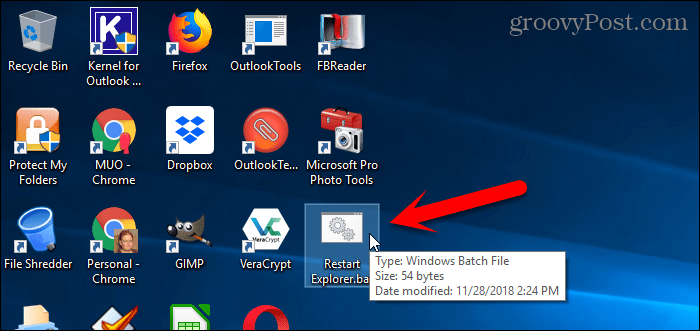So, if Windows 10 File Explorer is not responding for you or other parts of the Windows interface are not working as expected, you can refresh the explorer.exe process by restarting it. This usually has no negative side effects on other running programs. Today, we’ll show you four ways to restart the explorer.exe process in Windows 10.
Restart the explorer.exe Process using Task Manager
If Windows is still responsive, the easiest way to restart the explorer.exe process is through the Task Manager. Right-click on the Taskbar and select Task Manager. You can also press Shift + Ctrl + Esc to open the Task Manager.
If the Task Manager looks like the following image, click More details at the bottom.
If File Explorer is currently open, you’ll see Windows Explorer under Apps on the Processes tab. Otherwise, you can find the Windows Explorer process under Windows processes on the same tab. Click on Windows Explorer and then click Restart.
You can also right-click on the Windows Explorer process and select Restart.
You’ll see the desktop icons and the Taskbar disappear for a second or two and then come back.
Exit Explorer from the Taskbar Context Menu and Start it Again from the Task Manager
This method is a bit longer, but we include it for completeness. We’re going first to exit Explorer (end the explorer.exe process) and then rerun it in Task Manager. Press and hold the Shift and Ctrl keys down at the same time. Then, right-click on the Taskbar and release the Shift and Ctrl keys. Select Exit Explorer from the menu.
Your screen will be blank because you’ve ended the process that controls the desktop elements, like the Taskbar icons. Press Shift + Ctrl + Esc to open the Task Manager. There is currently no Taskbar to right-click on to access the Task Manager. Go to File > Run new task.
On the Create new task dialog box, type: explorer.exe in the Open box and click OK. All the desktop elements come back. You can close the Task Manager.
Manually Restart the explorer.exe Process Using the Command Line
If you like using the command line, you’ll be glad to know you can restart the explorer.exe process using a couple of simple commands. To open a Command Prompt window, press Windows key + R to open the Run dialog box. Type: cmd.exe in the Open box and click OK.
Type the command below at the prompt and press Enter. This ends the explorer.exe process. You’ll see a blank screen behind the Command Prompt window. Keep the window open. To start the explorer.exe process again, type the following command at the prompt and press Enter. Your desktop icons, Taskbar, and all the other desktop elements come back.
Quickly Restart the explorer.exe Process Using a Batch File
Instead of opening a Command Prompt window and typing the two commands in the previous section every time you want to restart the explorer.exe process, you can run these commands by double-clicking a single file. We’ll show you how to create a batch file, which is a file that contains a script that runs when you double-click on the file. Open Notepad or your favorite text editor. Copy the following three lines and paste them into the text editor.
Now we need to save the file as a batch file. Go to File > Save As. On the Save As dialog box, navigate to where you want to save the batch file. You should save it somewhere easy to get to, like the Desktop. Or, you can save it somewhere on your hard drive and create a shortcut to it on the desktop. Enter a name for your batch file in the File name box. Instead of the .txt extension, make sure you use the .bat extension.
When you need to restart the explorer.exe process, double-click on the batch file you created or the shortcut to it.
Easily Reset the Desktop, Taskbar, and File Explorer Any Time You Need
There are other reasons you may need to restart the explorer.exe process. For example, when you make a change to the registry, you may have to restart the process to complete the change. We’ve also covered how to restart the explorer.exe process in Windows 8 and Windows 7. Get more familiar with File Explorer and the Taskbar in Windows 10. You can also enable a hidden, modern File Explorer in Windows 10 if you want something different. I still can’t figure out how Microsoft trashed IE-11 so bad they had to developed the Edge browser, doesn’t speak well for Windows 11. Anyways, I forwards this great tip to my 80+ yr old parents, who are still in Windows 98, class 101 level. I noticed just last week that it only locks up for me when accessing files I have stored on OneDrive. It never locks up when I’m using it to access files stored only on my laptop. How does one let MicroSoft know about this? Any suggestions for this? I may try uninstalling the OneDrive app and reinstalling. Comment Name * Email *
Δ Save my name and email and send me emails as new comments are made to this post.
![]()

